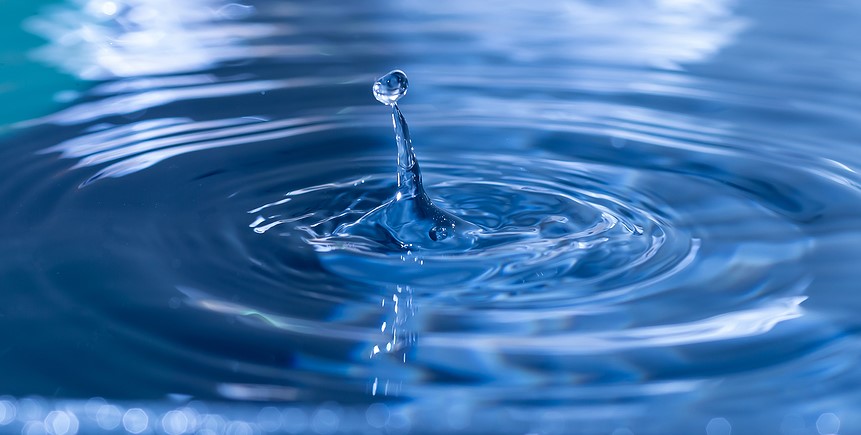News
Discover Your Local Water Gaps Using The World Water Map
Knowledge is power, as the old adage goes, and when it comes to living more sustainably it can be very useful indeed for both individuals and businesses alike to see what issues face their local communities so they can decide where best to focus their eco-friendly efforts first.
Of course, one of the most pressing climate change-related problems for us all, no matter where in the world you live, is water stress and scarcity.
However, despite being one of the most urgent concerns fuelled by the climate emergency, water is one of the least discussed problems of them all… which is something the World Water Map aims to change.
Developed by Utrecht University, the National Geographic Society and ESRI, the map provides users with information relating to water shortages, demand and supply sector by sector around the world, combining scientific data with the fine art of storytelling to help raise awareness of global water issues, improving water literacy and inspiring solutions to drive more sustainable use of resources.
The map itself, launched during the UN 2023 Water Week, forms part of the National Geographic Society’s Global Freshwater Initiative, which focuses on the availability, quality and sustainability of freshwater globally by leveraging the development of a geovisualisation of resources around the world.
The need for the map couldn’t be more clear, with figures now showing that human intrusion on the water cycle is really starting to take its toll. Each year, 4,000 cubic kilometres of water is extracted from the natural environment around the world, which is eight times higher than it was 100 years ago.
Resources are used for crop irrigation, for industry, running factories and power plants, for domestic use in kitchens and bathrooms… and the situation is being exacerbated by population growth, which is naturally increasing demand for water supplies everywhere.
This is creating a water gap in a growing number of places around the world, with shallow aquifers being depleted in order to access the water we need.
By using more resources than the water cycle can provide, it may be that we need to tap into deeper aquifers in the future, sources that may not be renewed within our lifetime. This, in turn, puts human health and wellbeing at risk, as well as that of ecosystems and wildlife.
But using the information that can be found in the World Water Map can help further a more in-depth understanding of where and why water gaps arise, as well as how they might be aggravating by climate change and how they could potentially be managed over time.
How does the map work?
Water gaps appear when human demand exceeds the natural renewable supply of water resources, those from rivers, lakes and shallow aquifers, which are all replenished when it rains.
The map works out the available surface and groundwater in any given area from the data that’s available on soil, vegetation and weather, while analysing the main drivers of water demand in specific locations.
You can find out more about the problems in your local region by hovering over the map and seeing what the main drivers behind your water gaps are. From there, you can start making more sustainable decisions regarding water usage and consumption, helping you to reduce your own individual water footprint.
Interestingly, the fastest growing area driving water consumption is domestic use, something that increases dramatically in line with developing economies, but which also varies significantly between different countries.
In the US, for example, two billion people don’t have sufficient access to safe water at home, but 30 per cent of the domestic water use total goes towards keeping lawns green, while the average home wastes 9,400 gallons a year in leakage.
Industry also uses a huge amount of water for manufacturing, but another part of the problem here is that different sectors also reduce water supplies by causing pollution through their operations and activities. Some of the biggest culprits in this regard include the paper and chemical industries, as well as coal, nuclear, beverages and fashion.
And irrigation poses yet another risk to water resources, using more and more to feed a growing population. Over the last 50 years or so, irrigated fields have doubled around the world to make up 20 per cent of all agricultural land, producing 40 per cent of all food, for humans and livestock.
These global trends are certainly of huge concern, but this new model is able to track changes in demand and supply over time.
For example, some places may see a drop in demand as crops change, as urban environments deliver conservation efforts and coal plants are retired, but supply may drop as well, in line with climate change… something that is already being seen in the Colorado River basin.
The map helps to identify hotspots where gaps between supply and demand are the largest, which is the first step towards making reparations. India, for instance, has had to pump out more groundwater than any other country in the world, the bulk of which is used for irrigation.
It is now having to use finite groundwater resources to help prevent mass famine in the country, although one potential solution to the problem is returning to climate-adapted grains in the north-west and growing rice in the south and north-east.
As well as developing this map, the National Geographic Society is raising awareness of the situation by telling the stories of those communities and individuals that are being affected by the water crisis. Photography, films, writing and other such content will be produced relating to issues about freshwater.
Do you want to find out more about why water efficiency is so important? Get in touch with us here at H2o Building Services to see how we can help.
